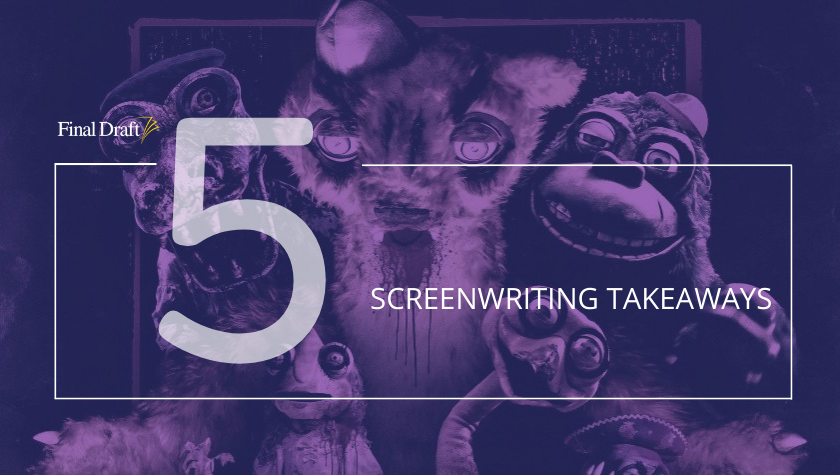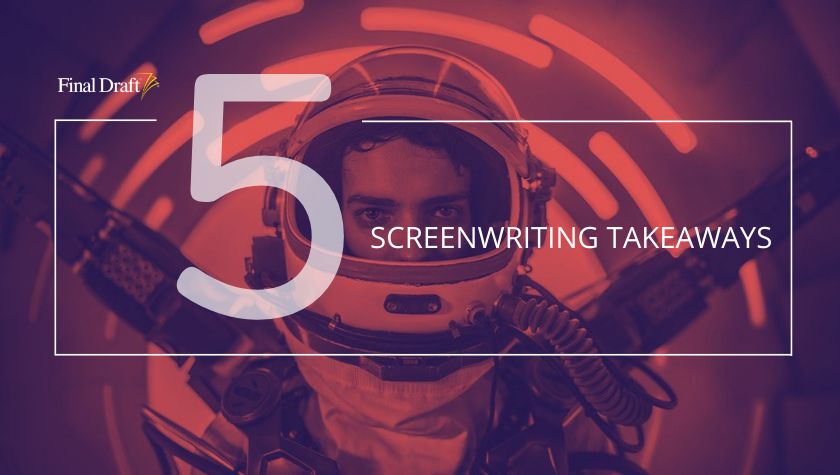5 Screenwriting Takeaways: ‘Breach’ Models Past Sci-Fi Horror Classics
December 23, 2020
Breach (originally titled Anti-Life) starring Cody Kearsley and Bruce Willis, is a sci-fi space thriller in the vein of the original Alien and The Thing — but with a twist.
When the crew starts dying onboard the last interstellar ark transporting 300,000 refugees from an Earth dying out from a devastating plague, Noah, a janitor played by Kearsley, and Clay, his supervisor; a heavily drinking space mechanic played by Willis, team up to figure out what’s going wrong. Before long they realize that a shapeshifting alien of unknown origin is rapidly attacking the crew, sabotaging the ship, aiming to kill everyone on board.
Noah, stowaway turned janitor, has smuggled himself onto the ship in order to accompany his pregnant girlfriend Hayley (Kassandra Clementi) to “new earth” while she travels in the comfort of cryosleep for the six-month journey. He hangs out and chats “at” her periodically while she’s in her cryo chamber (a bit of a Passengers vibe). The fact that Hayley is the admiral’s daughter is a complicating factor.
Noah and Clay — with the help of a handful of other crew members — attempt to find various solutions to defeat the shapeshifters and protect their fellow passengers in cryo.
Here are five takeaways from Breach sci-fi screenwriters can draw on in their own scripts.
1. Sci-fi is a flexible 'reality' genre
One of the beautiful things about science fiction is that it’s actually a “reality” genre, not a “content” genre. (For more on this, check out Shawn Coyne’s book The Story Grid.) Although there are some accepted conventions for sci-fi stories, the sci-fi designation says more about the context and the world for the story than it does about what happens in the story. This is why writers can mash up sci-fi so readily with other genres. Think about the difference between sci-fi/romance, sci-fi/action, and sci-fi/horror, just to get a sense of possible variations and the flexibility sci-fi offers as a kind of umbrella genre.
Breach, categorized as sci-fi/action on IMDb, reads more like sci-fi/horror. The aforementioned shapeshifting aliens neatly take us into the realm of horror, and hearken back to the good old days of Alien and The Thing, two classic sci-fi/horror films. Each — including Breach — tells the story of a crew trapped in a contained environment contaminated by an otherworldly force picking them off one by one.
A useful thought experiment for sci-fi writers: Tack on the words “in space” at the end of one of your favorite non-sci-fi films (or concepts) to see what story ideas you inspire for yourself.
2. Ordinary characters in extraordinary circumstances come with a built-in character arc
A useful storytelling framework is to type the characters and their situation as either ordinary or extraordinary.
You might have:
- ordinary characters in ordinary circumstances (most dramas)
- extraordinary characters in ordinary circumstances (think of Superman)
- ordinary characters in extraordinary circumstances (like Breach), or
- extraordinary characters in extraordinary circumstances (like The Avengers)
Breach, in keeping with horror conventions, features ordinary characters dealing with extraordinary circumstances. A janitor and a space mechanic (ordinary) have to save their ship and fellow crew members from an unstoppable alien force (extraordinary). A natural outcome this combination leads to is the opportunity to see a common “regular” guy overcome fear and reluctance and to become a hero; it all but provides a built-in character arc (though the writer still has to do the job of delivering on that arc and not falling into cliché).
3. A-list actors lend credibility to a film
There’s nothing like an A-list or known actor to bring cachet and credibility to a movie. Though it’s no Die Hard in space, having Bruce Willis onscreen (and on the movie posters) ups the ante in terms of viewer expectations and willingness to watch.
Screenwriters can take advantage of this by working to write roles for A-list actors. It’s not hard to imagine Willis being entertained by the notion of playing a space mechanic who mentors a janitor trying to save a ship from alien monsters in space. It’s also not hard to imagine Thomas Jane (The Expanse) attracted to playing the admiral and Noah’s girlfriend’s father. Rachel Nichols (Continuum) lends her credibility as well in perhaps one of the best roles as the ship’s doctor.
They lend their acting quality and credence to an otherwise smaller film.
4. Tie the global stakes to personal stakes
The stakes are clear in this story: kill the aliens or everyone dies. Breach also makes it personal: if Noah doesn’t stop the aliens, his beloved girlfriend and unborn child will die, too. It’s clear from the get-go he’s willing to risk anything and everything — including his own self-respect when he can’t even declare who he is to her father — in order to protect his little family. While Noah’s arc could be more clearly delivered, the audience still has a clear sense of what’s motivating him and why.
5. Your title makes a promise to the audience
Interestingly, the title for this project was changed at some point from Anti-Life to Breach, though it’s unclear why. (In an interview elsewhere, director John Suits mentioned that choice as being “above his pay grade.”)
A title (particularly in combination with a movie poster) does several jobs. It speaks to genre, theme and story, and makes a promise to an audience about what to expect. A sci-fi-ish sounding title sets the stage for the world and the story’s context. A title can also tell us what might happen in the story.
The original title, Anti-Life, hints at underlying reasons for the alien assault and perhaps also the ongoing tensions amongst the humans escaping their dying planet.
Breach could suggest something about where the aliens came from, or perhaps that the ship might be breached, maybe as a way of dealing with the aliens. "Into the breach" is also a common expression used to explain someone who steps in when help is needed, which our hero Noah does.
Neither is perfectly clear nor delivered, but both hint at genre and story in a useful way that guides audience expectations about what lies ahead.
Breach released through Saban Films in theaters, on-demand and digital on Dec. 18, 2020.
Written by: Jenna Avery
Jenna Avery is a screenwriter who specializes in sci-fi action and space fantasy, and her most recent project is a post-apocalyptic coming-of-age story for a Canadian producer-director. Jenna is also a writing coach and the founder of Called to Write, where she has helped hundreds of writers overcome procrastination, perfectionism, and resistance so they can get their writing onto the page and into the world where it belongs. Jenna writes about writing and fulfilling your creative calling at calledtowrite.com, writes for ScriptMag and Final Draft, and teaches at Script University. Download Jenna’s free guidebooks for writers, including “How to Choose Your Next Book (or Script!)” when you join her mailing list at https://www.calledtowrite.com/mailing-list- Topics:
- Discussing TV & Film




